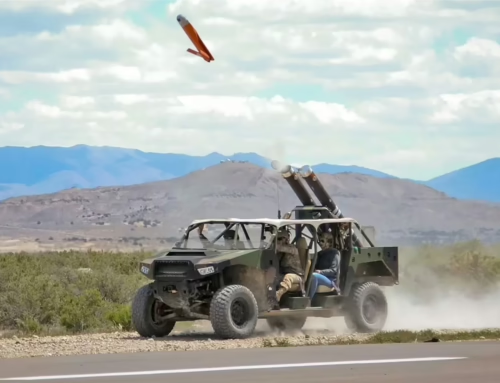China’s rapid advancements in military robotics underscore its strategic commitment to integrating cutting-edge technology into defence operations. The Chinese People’s Liberation Army (PLA) has been at the forefront of developing diverse robotic systems, enhancing its tactical capabilities across various terrains and combat scenarios. This article explores some of the critical developments and implications of these advancements.
Versatile Robotic Systems
One of the most notable demonstrations of Chinese military robotics is the recent video showcasing a range of robots designed for surveillance, bomb disposal, and direct combat roles. These robots exhibit impressive mobility and can traverse rugged terrains, navigate autonomously, and deploy weaponry. Such capabilities reflect the PLA’s emphasis on creating versatile systems that adapt to different operational environments.
Quadruped Robots: The “Mechanical Yak”
Among the groundbreaking innovations is the development of the world’s most giant quadruped military robot, often called the “mechanical yak.” This robot is designed to carry significant payloads up to 160 kilograms and travel up to six miles per hour. Its ability to handle various terrains, including forests and rocky paths, makes it an invaluable asset for logistics and reconnaissance missions (The Defense Post).
Swarming and Autonomous Operations
China’s investment in swarm technology and autonomous systems is another critical area of advancement. The PLA has demonstrated the deployment of swarms of attack drones capable of rapid deployment, hovering, and coordinated manoeuvres. This technology allows for overwhelming an adversary’s defences through sheer numbers and tactical versatility. These drones can operate independently, making real-time decisions without human intervention (Brookings) (The Defense Post).
The Sharp Claw Family
The Sharp Claw series represents a significant leap in China’s unmanned ground vehicle (UGV) capabilities. The Sharp Claw 2, a 1-ton armoured vehicle, can operate autonomously and deploy smaller robotic units like the Sharp Claw 1, equipped with various weapons and reconnaissance tools. This “marsupial” approach allows for flexible mission profiles, where larger UGVs can support and deploy smaller units for specific tasks (Popular Science).
Integration of AI and Machine Learning
Integrating artificial intelligence (AI) and machine learning (ML) into these robotic systems is a testament to China’s strategic foresight. These technologies enable robots to process vast amounts of data, learn from operational experiences, and improve their performance over time. The AI-driven capabilities extend to facial recognition and voice command processing, enhancing the robots’ functionality in complex scenarios (Brookings).
Strategic Implications
China’s deployment of advanced military robots has significant strategic implications. It represents a shift towards more automated and AI-driven warfare, potentially reducing human casualties and increasing operational efficiency. Moreover, these advancements may prompt other nations to accelerate their military robotics programs, potentially leading to an arms race in autonomous and robotic warfare technologies.
China’s focus on robotics and AI in the military domain highlights a broader trend towards the “intelligentization” of warfare, where autonomous systems play a central role in future combat scenarios. As these technologies evolve, their impact on global military dynamics and defence strategies will be profound.
Conclusion
China’s progress in military robotics showcases a blend of innovative engineering and strategic vision. These advancements are reshaping the landscape of modern warfare, from quadruped robots designed for logistics to sophisticated swarming drones and autonomous UGVs. As the PLA continues to integrate AI and ML into its robotic systems, the future of military operations will likely see an increased reliance on these autonomous technologies. This trend enhances China’s military capabilities and sets a benchmark for global defence innovation.
For more information on the latest developments in military technology, visit Agincourt.io.




